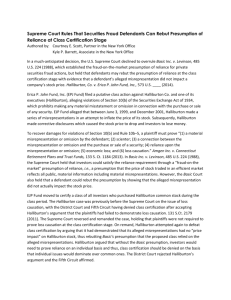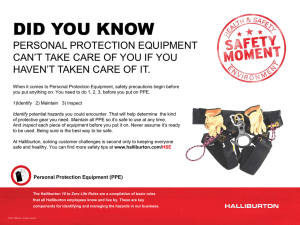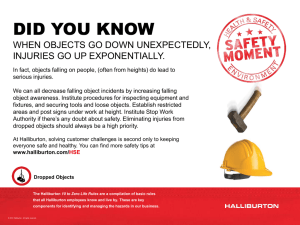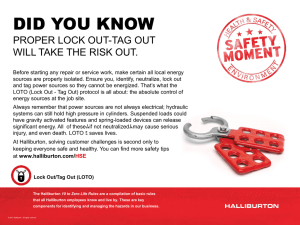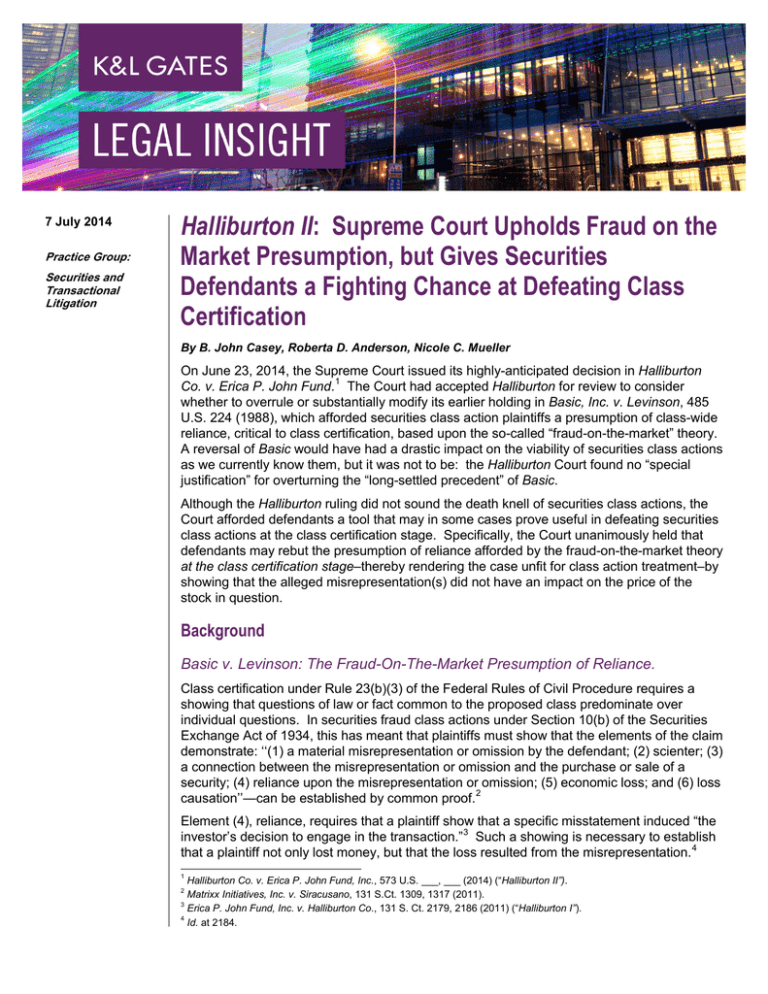
7 July 2014
Practice Group:
Securities and
Transactional
Litigation
Halliburton II: Supreme Court Upholds Fraud on the
Market Presumption, but Gives Securities
Defendants a Fighting Chance at Defeating Class
Certification
By B. John Casey, Roberta D. Anderson, Nicole C. Mueller
On June 23, 2014, the Supreme Court issued its highly-anticipated decision in Halliburton
Co. v. Erica P. John Fund.1 The Court had accepted Halliburton for review to consider
whether to overrule or substantially modify its earlier holding in Basic, Inc. v. Levinson, 485
U.S. 224 (1988), which afforded securities class action plaintiffs a presumption of class-wide
reliance, critical to class certification, based upon the so-called “fraud-on-the-market” theory.
A reversal of Basic would have had a drastic impact on the viability of securities class actions
as we currently know them, but it was not to be: the Halliburton Court found no “special
justification” for overturning the “long-settled precedent” of Basic.
Although the Halliburton ruling did not sound the death knell of securities class actions, the
Court afforded defendants a tool that may in some cases prove useful in defeating securities
class actions at the class certification stage. Specifically, the Court unanimously held that
defendants may rebut the presumption of reliance afforded by the fraud-on-the-market theory
at the class certification stage–thereby rendering the case unfit for class action treatment–by
showing that the alleged misrepresentation(s) did not have an impact on the price of the
stock in question.
Background
Basic v. Levinson: The Fraud-On-The-Market Presumption of Reliance.
Class certification under Rule 23(b)(3) of the Federal Rules of Civil Procedure requires a
showing that questions of law or fact common to the proposed class predominate over
individual questions. In securities fraud class actions under Section 10(b) of the Securities
Exchange Act of 1934, this has meant that plaintiffs must show that the elements of the claim
demonstrate: ‘‘(1) a material misrepresentation or omission by the defendant; (2) scienter; (3)
a connection between the misrepresentation or omission and the purchase or sale of a
security; (4) reliance upon the misrepresentation or omission; (5) economic loss; and (6) loss
causation’’—can be established by common proof.2
Element (4), reliance, requires that a plaintiff show that a specific misstatement induced “the
investor’s decision to engage in the transaction.”3 Such a showing is necessary to establish
that a plaintiff not only lost money, but that the loss resulted from the misrepresentation. 4
1
Halliburton Co. v. Erica P. John Fund, Inc., 573 U.S. ___, ___ (2014) (“Halliburton II”).
Matrixx Initiatives, Inc. v. Siracusano, 131 S.Ct. 1309, 1317 (2011).
3
Erica P. John Fund, Inc. v. Halliburton Co., 131 S. Ct. 2179, 2186 (2011) (“Halliburton I”).
4
Id. at 2184.
2
Halliburton II: Supreme Court Upholds Fraud on the
Market Presumption, but Gives Securities Defendants a
Fighting Chance at Defeating Class Certification
The rationale behind this requirement is that, absent such a connection, the cause of action
for securities fraud would become a “scheme of investor’s insurance.” 5
Reliance, as the Supreme Court recognized in Basic, is an inherently individualized inquiry.
Accordingly, the Court observed in Basic that, “[r]equiring proof of individualized reliance”
from every class member would “prevent[] [plaintiffs] from proceeding with a class action …
because “individual issues then would … overwhelm[] common ones.”6
Consequently, the Basic Court, following the lead of a number of lower courts, allowed
securities fraud plaintiffs to raise a rebuttable presumption of reliance under the fraud-on-themarket theory. This economic theory presumes that (1) all material public information–
including any misstatements–is reflected in the price of a stock traded on a well-developed
market, and (2) investors rely on the integrity of the market price to reflect all such
information when determining whether to buy or sell a security. Thus, under the doctrine,
investors need not show that they relied directly on the misstatements in order to recover
damages.
To invoke the fraud-on-the-market theory and thereby establish a rebuttable presumption of
reliance, plaintiffs are required to demonstrate that: (1) the alleged misrepresentations were
publicly known, (2) the stock in question traded in an efficient market, and (3) the relevant
securities transaction occurred between the time the misrepresentations were made and the
time the truth was revealed. 7 Without the fraud-on-the-market presumption, issues of
individual reliance likely would overwhelm common issues in securities class actions,
resulting in the denial of class certification. 8
The Court in Basic also held that a defendant could rebut the presumption of reliance by
showing that the alleged misrepresentation or omission did not actually distort the stock
price.9 A defendant may rebut the presumption with ‘‘[a]ny showing that severs the link
between the alleged misrepresentation and either the price received (or paid) by the plaintiff,
or his decision to trade at a fair market price.’’ 10
Circuit Split: Need a Plaintiff Show Loss Causation to be Entitled to the Fraud
On-The-Market Presumption?
In Basic, the Supreme Court outlined guidelines for invocation of the fraud-on-the-market
doctrine but did not provide specific procedural and substantive rules for its application. As a
result, a split ultimately developed on the application of the doctrine. Specifically, the Fifth
Circuit interpreted Basic to require that a securities plaintiff affirmatively establish loss
causation–i.e., that the misstatement caused the loss–at the class certification stage; 11 the
5
See Dura Pharmaceuticals, Inc. v. Broudo, 544 U.S. 336, 345 (2005) (quoting Basic, 485 U.S. at 252 (White, J.,
concurring in part and dissenting in part)).
6
Basic, 485 U.S. at 245.
7
Halliburton I, 131 S. Ct. at 2185.
8
More recently, the Court made the same observation in Amgen, Inc. v. Connecticut Retirement Plans and Trust Funds,
when it noted: “[a]bsent the fraud-on-the-market theory, the requirement that Rule 10b-5 plaintiffs establish reliance would
ordinarily preclude certification of a class action seeking money damages because individual reliance issues would
overwhelm questions common to the class.” 133 S. Ct. 1184, 1193 (2013) (holding that plaintiff need not establish
materiality at the class certification stage).
9
Basic, 485 U.S. at 248.
10
Id.
11
See Oscar Private Equity Invs. v. Allegiance Telecom, Inc., 487 F.3d 261 (5th Cir. 2007).
2
Halliburton II: Supreme Court Upholds Fraud on the
Market Presumption, but Gives Securities Defendants a
Fighting Chance at Defeating Class Certification
Seventh Circuit disagreed, holding that, in an efficient market, “each investor’s loss usually
can be established mechanically, common questions predominate and class certification is
routine, if a suitable representative steps forward”; 12 and the Second and Third Circuits
similarly held that plaintiffs were not required to establish loss causation in order to invoke
the presumption of reliance, but did allow defendants to rebut this presumption prior to class
certification.13
Halliburton I: The Supreme Court Rejects the Fifth Circuit’s Interpretation
It was in this setting that plaintiff Archdiocese of Milwaukee Supporting Fund, Inc., filed a
class action against Halliburton alleging violations of Section 10(b) of the Securities
Exchange Act of 1934, 48 Stat. 891, 15 U.S.C. § 78j(b), and Securities and Exchange
Commission Rule 10b-5, 17 CFR § 240.10b-5, on behalf of investors who had purchased
shares in Halliburton between 1999 and 2001.
Plaintiffs moved to certify a class comprised of all investors who purchased Halliburton
common stock during the class period. Plaintiffs survived a motion to dismiss, but the district
court subsequently denied their motion for class certification on the basis that plaintiffs, as
required by the Fifth Circuit in Oscar, had failed to establish loss causation at the class
certification stage, and, thus, failed to show predominance as required by Fed. R. Civ. P. R.
23(b)(3). 14 The Fifth Circuit upheld the district court’s denial of class certification on the
same ground.15
In a unanimous decision, the Supreme Court in Halliburton I vacated the Fifth Circuit’s
judgment. 16 The Supreme Court held that securities fraud plaintiffs need not establish loss
causation at the class certification stage as a precondition for invoking the rebuttable fraudon-the-market presumption. 17 “Loss causation,” the Supreme Court explained, “addresses a
matter different from whether an investor relied on a misrepresentation, presumptively or
otherwise, when buying or selling a stock.” 18
Importantly, in vacating and remanding the Fifth Circuit’s judgment, the Supreme Court
observed that because it had rejected the Fifth Circuit’s loss causation requirement for class
certification, it was not required to address other issues raised regarding ‘‘Basic, its
presumption, or how and when it may be rebutted.’’ 19
On remand, both the District Court and Fifth Circuit refused to consider Halliburton’s
“rebuttal” evidence, offered at the class certification stage, that the misrepresentations
alleged by the plaintiffs had no impact on the stock price. Ultimately, the Supreme Court
granted certiorari a second time, 20 “to resolve a conflict among the Circuits over whether
12
Schleicher v. Wendt, 618 F.3d 679, 696 (7th Cir. 2010).
See In re Salomon Analyst Metromedia Litig., 544 F.3d 474, 485 (2d Cir. 2008); see also In re DVI, Inc. Sec. Litig., 639
F.3d 623 (3d Cir. 2011).
14
See Archdiocese of Milwaukee Supporting Fund, Inc. v. Halliburton Co., No. 3:02-CV-1152, 2008 WL 4791492, at *1819 (N.D. Tex. Nov. 4, 2008).
15
Archdiocese of Milwaukee Supporting Fund, Inc. v. Halliburton Co., 597 F.3d 330, 336 (5th Cir. 2010).
16
Halliburton I, 131 S. Ct. at 2186.
17
Id. (noting that requiring plaintiffs to show that a public misrepresentation caused subsequent economic loss
“contravenes Basic’s fundamental premise” and was not logically connected to whether an investor relied on such a
misrepresentation when buying or selling the company’s stock).
18
Id.
19
Id. at 2187 (emphasis supplied).
20
Halliburton Co. v. Erica P. John Fund, Inc., 134 S. Ct. 636 (2013)
13
3
Halliburton II: Supreme Court Upholds Fraud on the
Market Presumption, but Gives Securities Defendants a
Fighting Chance at Defeating Class Certification
securities fraud defendants may attempt to rebut the Basic presumption at the class
certification stage with evidence of a lack of price impact” and also “accepted Halliburton’s
invitation to reconsider the presumption of reliance for securities fraud claims that [it] adopted
in Basic.” 21
Halliburton II: The Supreme Court’s Ruling
In its opinion in Halliburton II, the Supreme Court held:
Halliburton had not shown the “special justification” needed to overrule Basic’s rebuttable
presumption of reliance in a Rule 10b-5 action based upon the fraud-on-the-market theory;
A plaintiff need not prove price impact at the class certification stage in order to invoke the
presumption; but
A defendant may rebut the presumption (and thereby presumably defeat class certification)
by proving that alleged misrepresentations did not distort the market price of the company’s
stock.
Writing for the majority, Chief Justice Roberts left the fraud-on-the-market theory intact,
noting that the Supreme Court does not overturn precedents lightly, particularly where the
Court is interpreting statutes that Congress may rewrite if it thinks the Court has erred in its
ruling. The Court found that Halliburton had failed to demonstrate the “special justification”
needed to overturn “long-settled precedent,” 22 and had not identified “the kind of
fundamental shift in economic theory that could justify overruling a precedent on the ground
that it misunderstood, or has since been overtaken by, economic realities.”23 With regard to
the arguments Halliburton advanced for overturning the fraud-on-the-market presumption of
reliance, the Court noted that many of the same arguments had been considered and
rejected by the Court in Basic.24
The Court also noted that the principle of stare decisis has “special force” “in respect to
statutory interpretation” because “’Congress remains free to alter what [the Court has]
done.’” 25 The Court found that Basic’s presumption of reliance was not inconsistent with
more recent decisions construing the Rule 10b-5 cause of action, but rather provided an
alternative means of satisfying the reliance element.26 Nor was Basic inconsistent with
recent law regarding class action certification because the presumption does not relieve
plaintiffs of the burden of proving predominance at the class certification stage (rather than
merely pleading it), but rather prescribes what plaintiffs must prove to demonstrate
predominance.27 Finally, the Court reasoned that arguments about the harmful effects of
securities class actions “are more appropriately addressed to Congress,” which had, the
Court noted, in fact already addressed some of those potentially harmful effects. 28
21
Halliburton II (slip op. at 4).
Id. at ___ (slip op. at 4),
23
Id. at ___ (slip op. at 11).
24
Id. at ___ (slip op. at 7-8).
25
Id. at ___ (slip op. at 12) (quoting John R. Sand & Gravel Co. v. United States, 552 U.S. 130, 139 (2008)).
26
Id. at ___ (slip op. at 13-14) (comparing Central Bank of Denver, N.A. v. First Interstate Bank of Denver, N.A., 511 U.S.
164 (1994); Stoneridge Inv. Partners, LLC v. Scientific-Atlanta, Inc., 552 U.S. 148 (2008)).
27
Id. at ___ (slip op. at 14) (comparing Wal-Mart Stores, Inc. v. Dukes, 131 S. Ct. 2541 (2011)).
28
Id. at ___ (slip op. at 15-16).
22
4
Halliburton II: Supreme Court Upholds Fraud on the
Market Presumption, but Gives Securities Defendants a
Fighting Chance at Defeating Class Certification
For the same reasons that the Court declined to overrule Basic’s presumption of reliance, it
also declined to modify the prerequisites for invoking the presumption by requiring plaintiffs
to prove “price impact” directly at the class certification stage. Requiring plaintiffs to prove
price impact directly, the Court held, would nullify Basic’s presumption that the
misrepresentation affected the stock price where the misrepresentation was public and
material and the stock traded in a generally efficient market. 29
The Court did, however, overturn the Fifth Circuit’s decision on a key holding on the more
narrow issue of whether defendants can, at the class certification stage, rebut the allegation
that a company’s stock price was inflated by purportedly fraudulent statements. Because
defendants can use such evidence to rebut the underlying premise of market efficiency at
later stages, Justice Roberts wrote, it does not make sense to deny the use of such evidence
elsewhere in the proceedings. 30 The Court found that forbidding defendants to submit the
same evidence at the class certification stage would readily lead to results that are
inconsistent with Basic’s own logic. 31 While Basic allows plaintiffs to establish price impact
indirectly, it should not preclude the consideration of a defendant’s direct, more salient
evidence showing that the purported misrepresentation did not actually affect the stock’s
price and that, consequently, the Basic presumption should not apply. 32 Such evidence has
“everything to do with the issue of predominance at the class certification stage.” 33 Indeed,
“[t]he fact that a misrepresentation ‘was reflected in the market price at the time of [the]
transaction’–that it had a price impact–is ‘Basic’s fundamental premise.’” 34 Without price
impact, the fraud-on-the-market theory “underlying the presumption completely collapses,
rendering class certification inappropriate.” 35
In a concurring opinion, Justice Thomas argued that the Court should have taken its decision
one step further by overturning Basic.36 Justice Thomas, with Justices Scalia and Alito
joining in his opinion, asserted that economic realities have “undermined the foundation of
the Basic premise.” 37 Justice Thomas derided the presumption that “most” investors rely on
the integrity of the price of a security as a “judicial hunch.”38 Justice Thomas also argued
that Basic conflicted with the Court’s recent rulings that plaintiffs seeking class certification
must “affirmatively demonstrate … through evidentiary proof” certification requirements like
the predominance of common questions. 39 Regarding the majority’s holding on the stare
decisis effect of Basic, Justice Thomas argued that “we ought to presume that Congress
29
Id. at ___ (slip op. at 16-18).
Id. at ___ (slip op. at 18-20). The Second and Third Circuits had previously ruled that a defendant may attempt to rebut
the fraud-on-the-market presumption by showing no price impact at the class certification stage. In re DVI, Inc. Sec Litig.,
639 F.3d at 638-39; In re Salomon Analyst Metromedia Litig., 544 F.3d at 484-86.
31
Id. at ___ (slip op. at 20).
32
Id. at ___ (slip op. at 20-21).
33
Id. at ___ (slip op. at 22).
34
Id. at ___ (slip op. at 22) (quoting Halliburton I, 131 S. Ct. at 2186).
35
Id.
36
Justice Ginsberg also filed a concurring opinion, stating that while advancing price impact consideration to class
certification may broaden the scope of discovery available at that stage of the proceedings, “[t]he Court’s judgment ...
should impose no heavy toll on securities-fraud plaintiffs with tenable claims.” See id. at ____ (Ginsberg, J., concurring)
(slip op. at 1). “On that understanding,” she, along with Justices Breyer and Sotomayor, joined the majority’s opinion. Id.
37
Id. at ___ (Thomas, J., concurring in judgment) (slip op. at 2).
38
Id. at ___ (Thomas, J., concurring in judgment) (slip op. at 10).
39
Id. at ___ (Thomas, J., concurring in judgment) (slip op. at 11) (quoting Comcast Corp. v. Behrend, 569 U.S. ___, ___
(2013) (slip op. at 5) (quoting Wal-Mart Stores, Inc. v. Dukes, 564 U.S. ___, ___ (2011) (slip op. at 10).
30
5
Halliburton II: Supreme Court Upholds Fraud on the
Market Presumption, but Gives Securities Defendants a
Fighting Chance at Defeating Class Certification
expects us to correct our own mistakes–not the other way around.” 40 Justice Thomas
contended that this was especially appropriate in the Rule 10b-5 context, noting that the
Court has itself observed that the federal courts have “accepted and exercised the principal
responsibility for the continuing elaboration of the scope of the 10b-5 right and the definition
of the duties it imposes.” 41
What This Means
Class certification in securities class actions has, in many respects, historically been a
“rubber stamp”: If plaintiff submitted basic evidence of an asserted misrepresentation and
market efficiency, the case likely would be certified. While the Halliburton II decision is a
disappointment for those who had hoped that the Court would overturn Basic, the holding
nonetheless provides defendants with an opportunity to defeat claims at the class
certification stage, thereby potentially avoiding expensive and burdensome merits discovery
that often accompanies securities class actions.
Questions certainly remain about how exactly a defendant can “rebut” the fraud-on-themarket presumption–e.g., a showing of no price impact at the time of the misstatement? At
the time of the corrective disclosure? At both times? Nonetheless, the Court’s opinion
should allow securities defendants to employ well-established economic stock price
analyses, including regression analyses called “event studies,” at the class certification stage
to rebut Basic’s presumption. 42 Although this ultimately could devolve into a battle of the
experts in cases in which there was strong market reaction to alleged misrepresentations,
cases in which the market had little reaction to an alleged “fraud” now could be subject to
dismissal at the class certification stage.
Authors:
B. John Casey
john.casey@klgates.com
+1.503.226.5716
Roberta D. Anderson
roberta.anderson@klgates.com
+1.412.355.6222
Nicole C. Mueller
nicole.mueller@klgates.com
+1.312.807.4341
40
Id. at ___ (Thomas, J., concurring in judgment) (slip op. at 16).
Id.
42
These kinds of studies also have historically been used on the issue of market efficiency.
41
6
Halliburton II: Supreme Court Upholds Fraud on the
Market Presumption, but Gives Securities Defendants a
Fighting Chance at Defeating Class Certification
Anchorage Austin Beijing Berlin Boston Brisbane Brussels Charleston Charlotte Chicago Dallas Doha Dubai Fort Worth Frankfurt
Harrisburg Hong Kong Houston London Los Angeles Melbourne Miami Milan Moscow Newark New York Orange County Palo Alto Paris
Perth Pittsburgh Portland Raleigh Research Triangle Park San Diego San Francisco São Paulo Seattle Seoul Shanghai Singapore Spokane
Sydney Taipei Tokyo Warsaw Washington, D.C. Wilmington
K&L Gates practices out of 48 fully integrated offices located in the United States, Asia, Australia, Europe, the
Middle East and South America and represents leading global corporations, growth and middle-market companies,
capital markets participants and entrepreneurs in every major industry group as well as public sector entities,
educational institutions, philanthropic organizations and individuals. For more information about K&L Gates or its
locations, practices and registrations, visit www.klgates.com.
This publication is for informational purposes and does not contain or convey legal advice. The information herein should not be used or relied upon in
regard to any particular facts or circumstances without first consulting a lawyer.
© 2014 K&L Gates LLP. All Rights Reserved.
7


